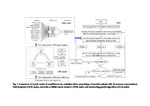Stochastic evolutionary-based optimization for rapid diagnosis and energy-saving in pilot- and full-scale Carrousel oxidation ditches
| dc.contributor.author | Li, L | |
| dc.contributor.author | Lei, L | |
| dc.contributor.author | Zheng, MS | |
| dc.contributor.author | Borthwick, Alistair | |
| dc.contributor.author | Ni, JR | |
| dc.date.accessioned | 2021-08-22T12:15:12Z | |
| dc.date.available | 2021-08-22T12:15:12Z | |
| dc.date.issued | 2020-03-01 | |
| dc.identifier.issn | 1726-2135 | |
| dc.identifier.issn | 1684-8799 | |
| dc.identifier.uri | http://hdl.handle.net/10026.1/17666 | |
| dc.description.abstract |
Energy consumption is a primary issue needed to be considered for wastewater treatment targeting qualified effluent. In this paper, a hybrid model is proposed for rapid diagnosis of operational conditions meeting requirements of discharge standards and energy saving in the pilot-and full-scale Carrousel Oxidation Ditches (ODs). Based on a three-dimensional (3D) three-phase computational fluid dynamics (CFD) model, we developed an artificial neural network (ANN) model with back propagation algorithm and an accelerating genetic algorithm (AGA) model to achieve real-time simulation and system optimization in the Carrousel ODs. By incorporating the 3D-CFD and multi-site ANN models, the hybrid model provided reasonable predictions of liquid flow, sludge sedimentation and water quality in the Carrousel ODs. With help of the AGA model based on evolution theory, system optimization could be reached to meet multiple purposes such as energy saving, water-quality improving and normal sludge distribution, which was demonstrated that a 31% saving in total energy could possibly be made under an optimum operating condition compared to the existing operating condition in a full-scale OD. | |
| dc.format.extent | 81-93 | |
| dc.language.iso | en | |
| dc.publisher | International Society for Environmental Information Science (ISEIS) | |
| dc.subject | 7 Affordable and Clean Energy | |
| dc.title | Stochastic evolutionary-based optimization for rapid diagnosis and energy-saving in pilot- and full-scale Carrousel oxidation ditches | |
| dc.type | journal-article | |
| dc.type | Journal Article | |
| plymouth.issue | 1 | |
| plymouth.volume | 35 | |
| plymouth.publication-status | Published online | |
| plymouth.journal | Journal of Environmental Informatics | |
| dc.identifier.doi | 10.3808/jei.201700377 | |
| plymouth.organisational-group | /Plymouth | |
| plymouth.organisational-group | /Plymouth/Faculty of Science and Engineering | |
| plymouth.organisational-group | /Plymouth/Faculty of Science and Engineering/School of Engineering, Computing and Mathematics | |
| plymouth.organisational-group | /Plymouth/Users by role | |
| plymouth.organisational-group | /Plymouth/Users by role/Academics | |
| dc.identifier.eissn | 1684-8799 | |
| dc.rights.embargoperiod | Not known | |
| rioxxterms.versionofrecord | 10.3808/jei.201700377 | |
| rioxxterms.licenseref.uri | http://www.rioxx.net/licenses/all-rights-reserved | |
| rioxxterms.type | Journal Article/Review |




